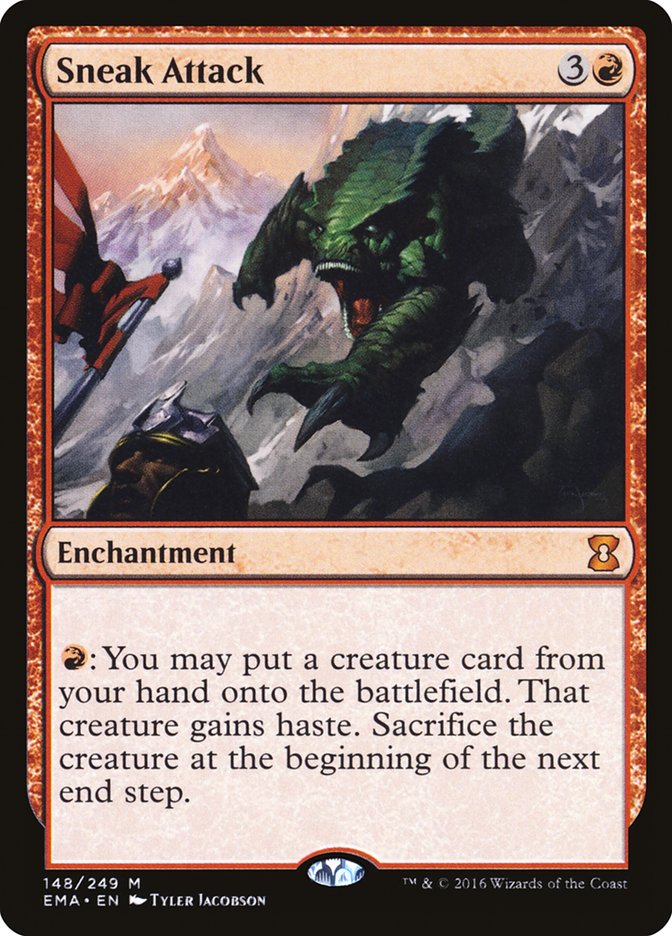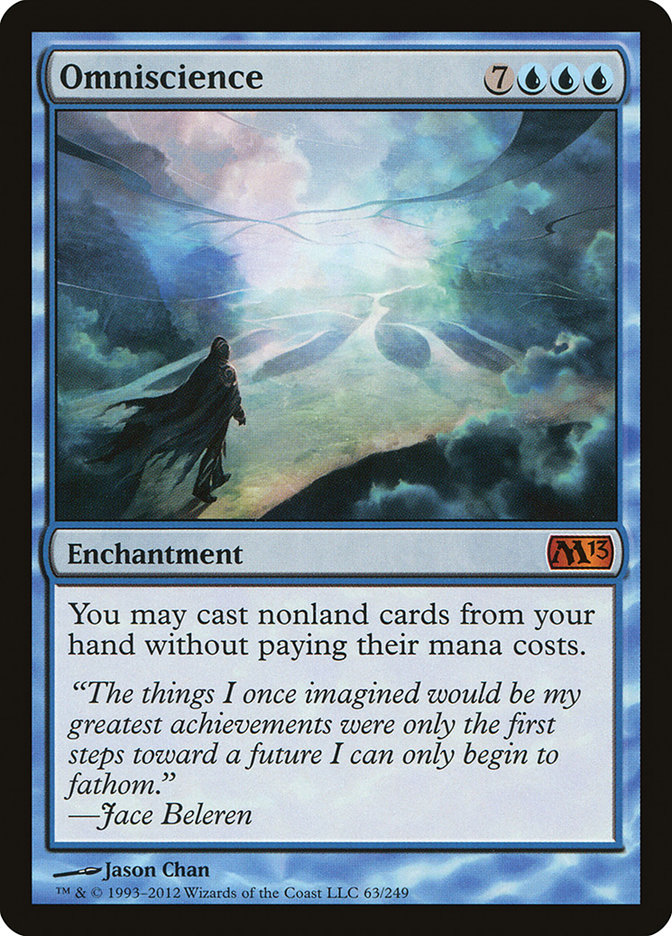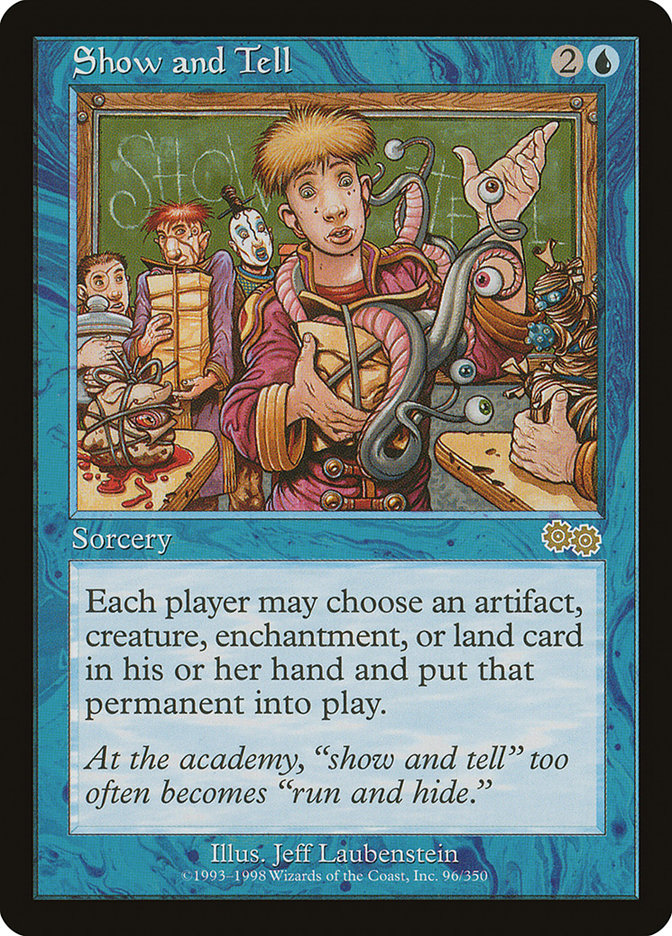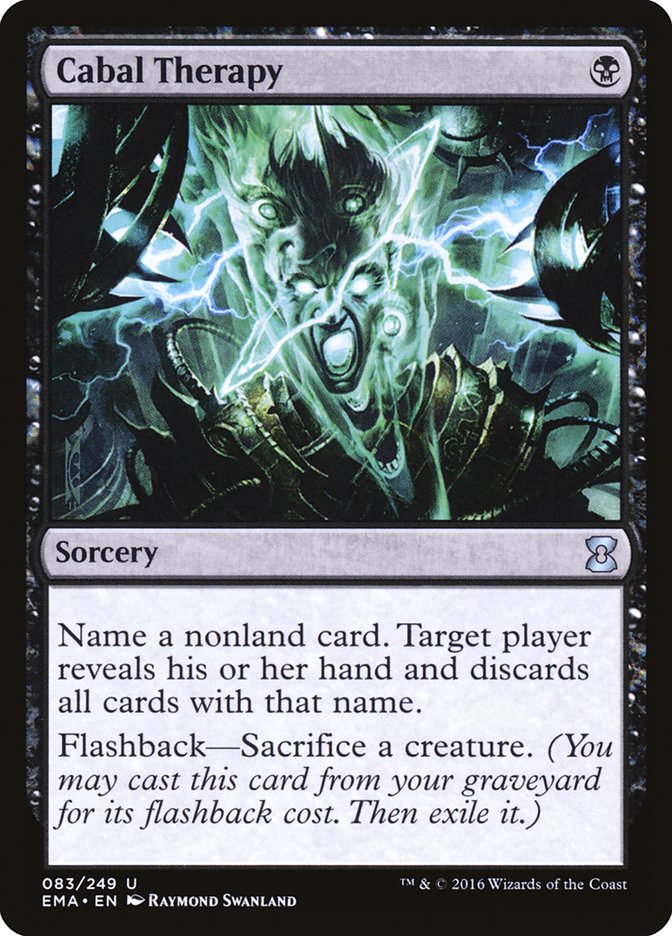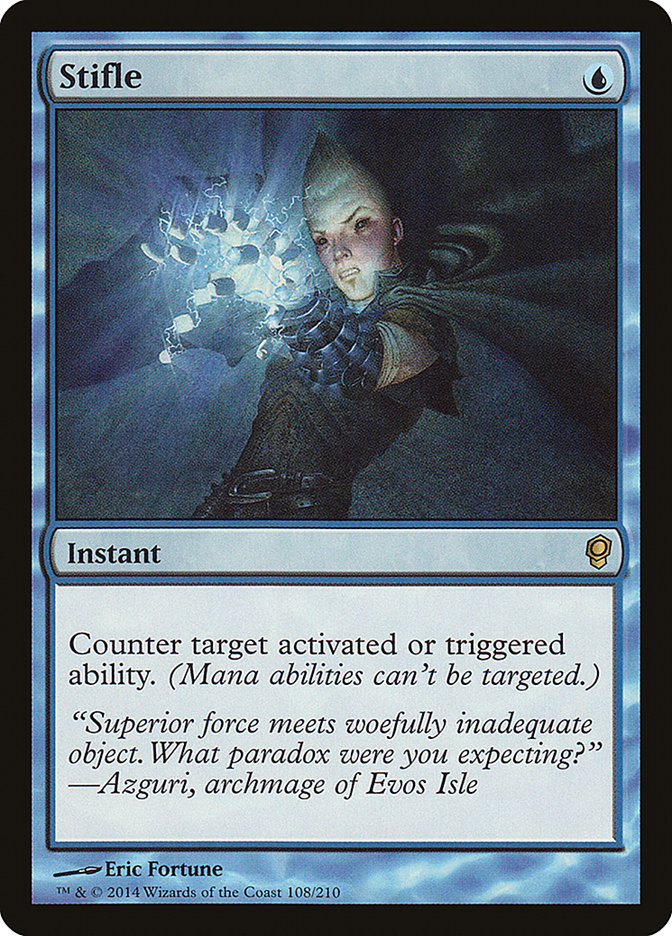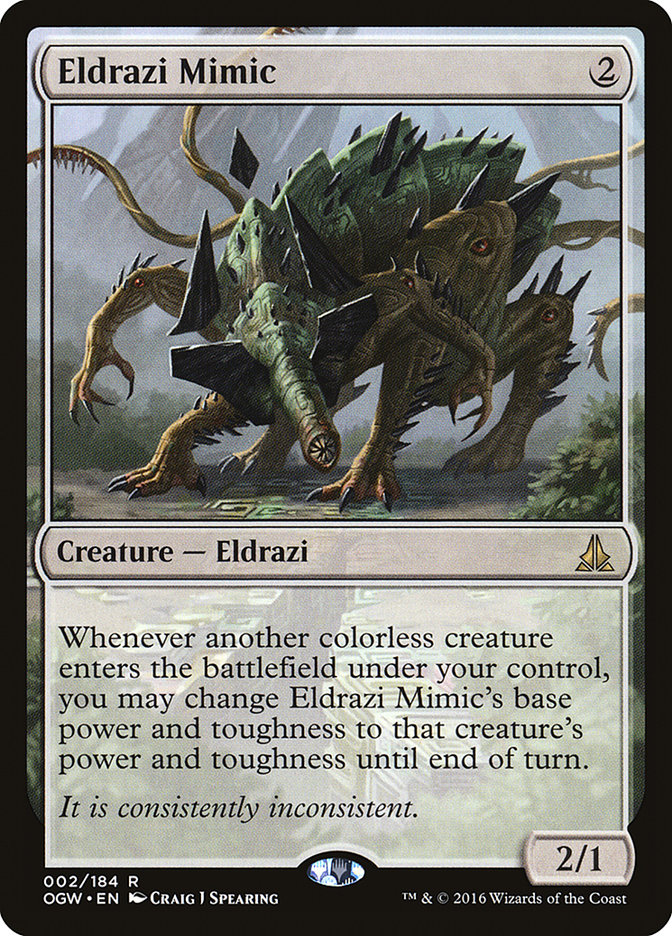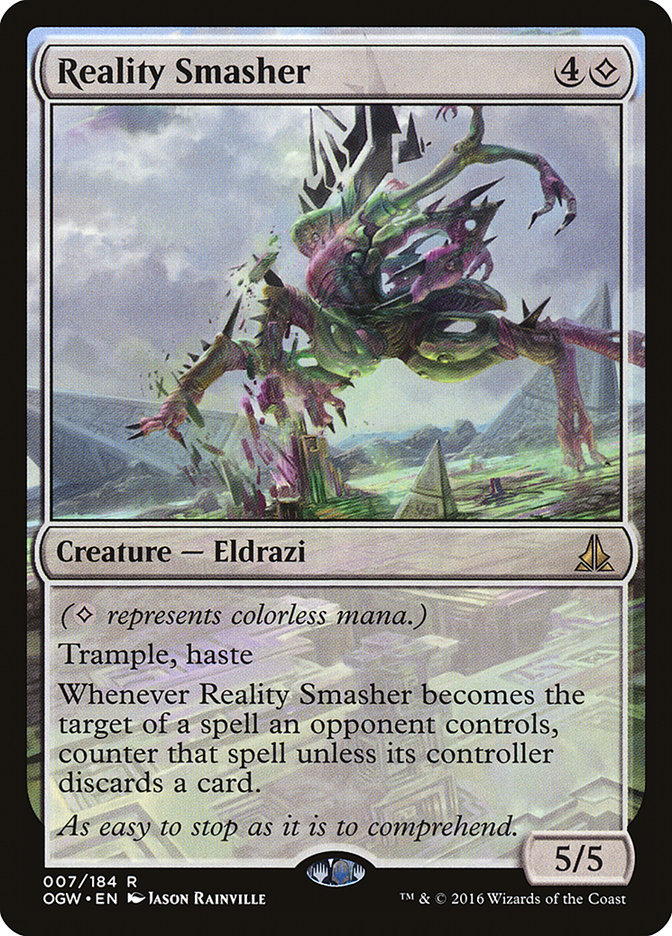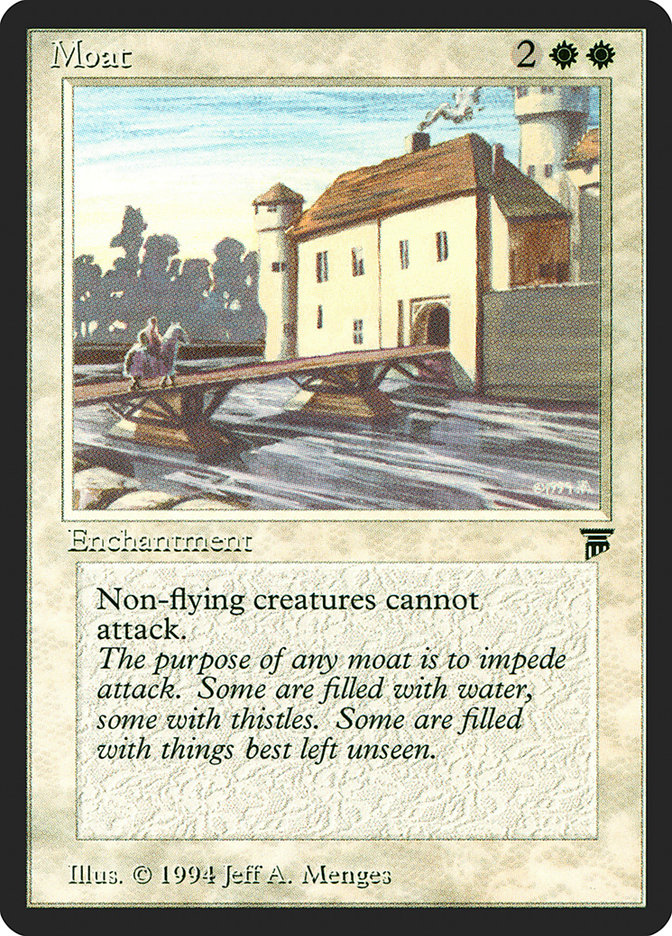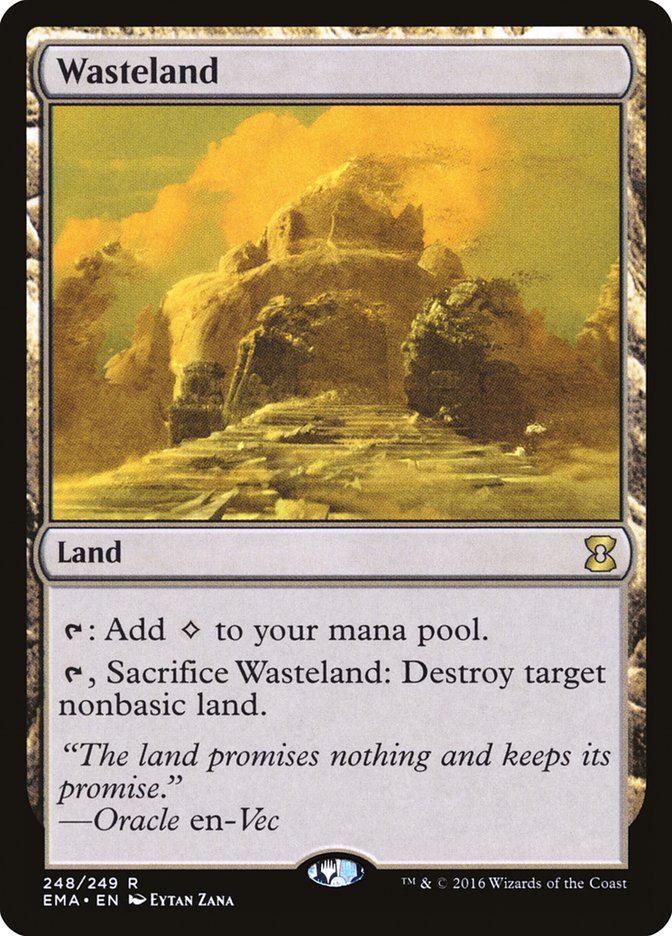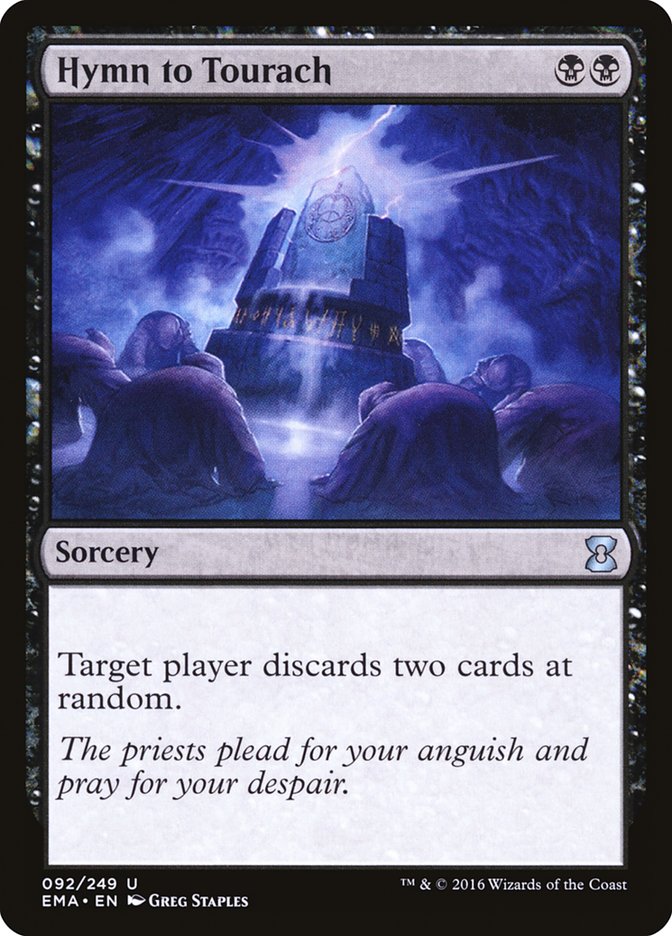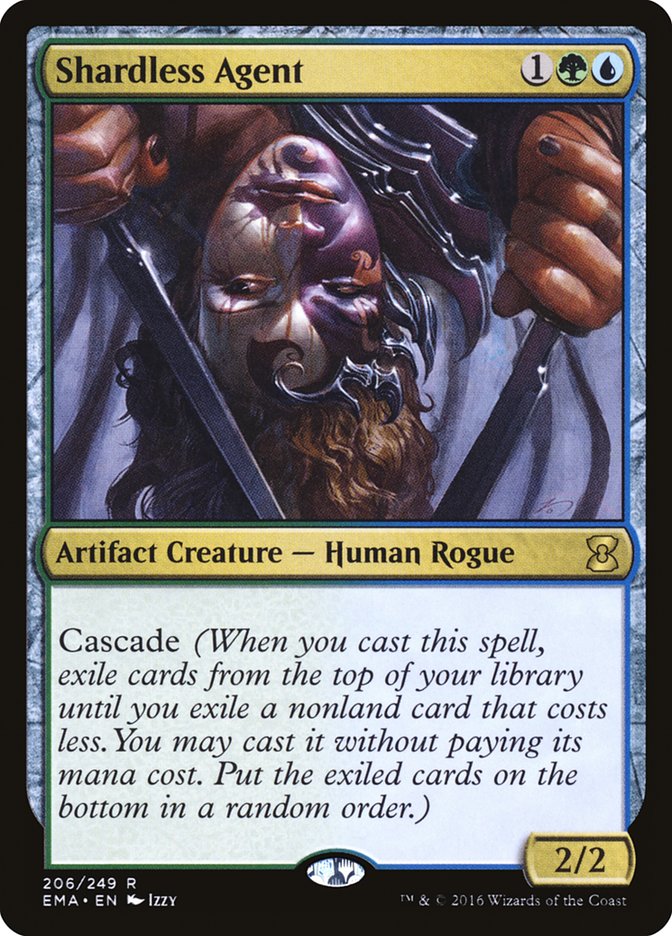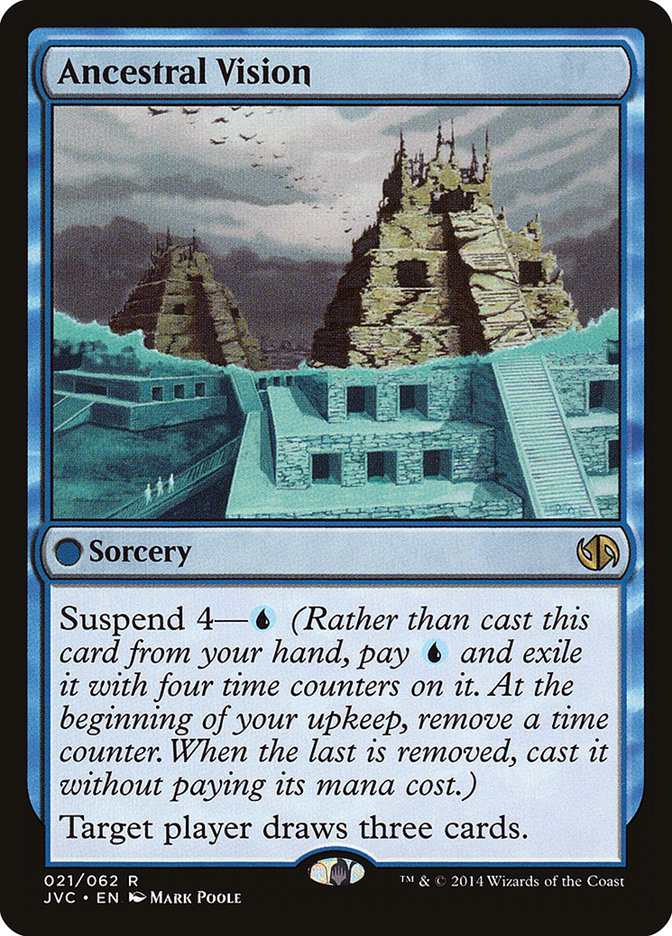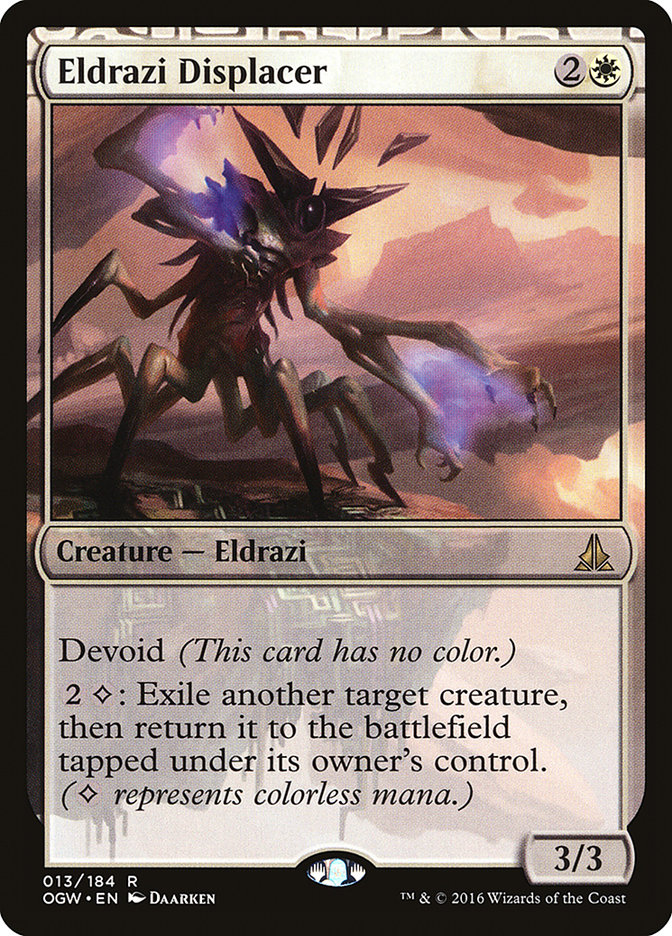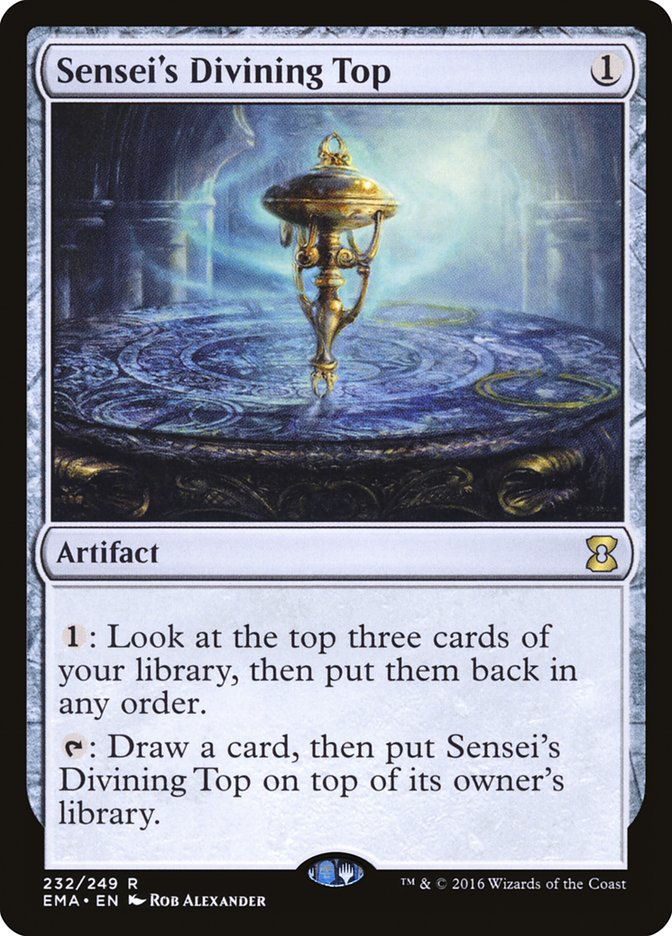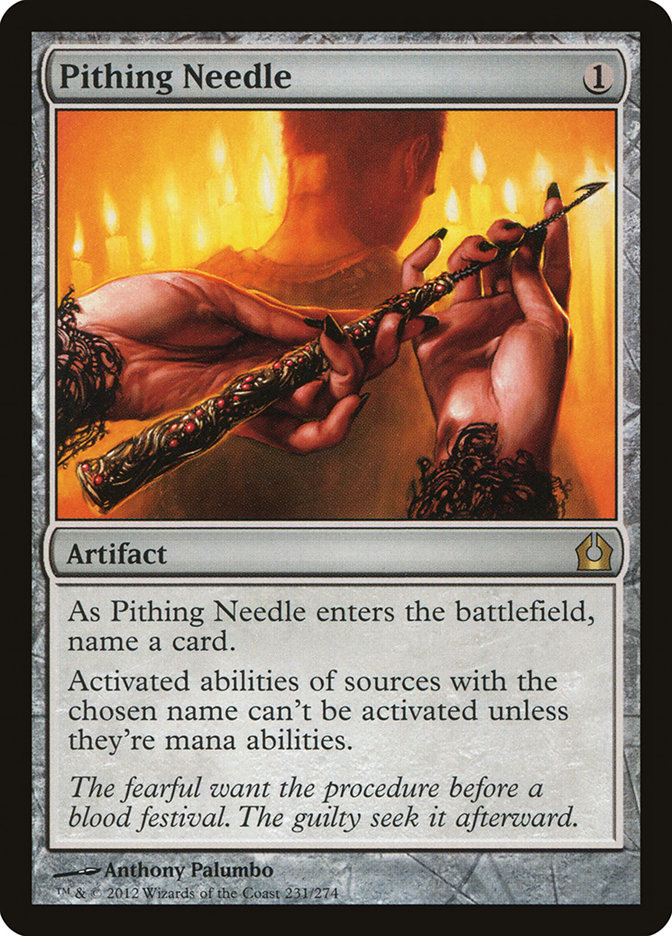This last weekend saw thousands of people playing Legacy at a high level at Grand Prix Columbus and GP Prague. With this many people playing the format has come the crystallization of a lot of things that have been slowly coming to the forefront. With the Top 32 decklists available from each event and the general textures of them being visible from those who played in them, this is what we can catch up on.
Update #1: Omniscience and Sneak Attack had a weird hybrid baby.
Omniscience and Show and Tell were distinct archetypes for a long time, but earlier this year we started seeing the two merge closely together. Chris VanMeter wrote about a very Sneak Attack focused version a few weeks ago, but the breakout appearance of the full hybrid version had to be Jonathan Anghelescu’s top four appearance at the Magic Online Championship last month with a full on half-and-half list. This last weekend, Niels Molle repeated this success with a Top 8 finish at Grand Prix Prague.
Creatures (6)
Lands (19)
Spells (35)

Sneak and Show and Omni-Tell have a lot of very specific faults related to their win conditions. Sneak and Show has a lot of specific hate cards related to creatures that it fails against. When I last played Death and Taxes, the deck was actually hard-locked by Karakas plus Phyrexian Revoker before it sideboarded into interaction. The same thing applies to Ensnaring Bridge and Containment Priest. Omni-Tell on the other hand was hamstrung by having to assemble a bigger combo and always being forced to go down the Show and Tell road. It also had specific problem hate cards that were a problem for it to kill through, namely Ethersworn Canonist.
Almost none of these problems overlap. The hybrid deck is a little less consistent, but at the same time, that means your opponent’s hate is just as inconsistent. You can still beat this hybrid by coming right at it with a tempo deck the way people have historically combated Legacy combo, but even that isn’t a hard solution, as City of Traitors and Ancient Tomb are so good against soft counters.
Update #2: Temur Delver has been long dethroned by Grixis Delver.
Oh, look, Noah Walker’s winning again with the deck he is the best at.
Creatures (14)
Lands (18)
Spells (28)

This of course isn’t the only example. While Temur Delver did put up a Top 8 finish at Grand Prix Prague, Grixis Delver put up three times that many elimination round finishes and has really been doing so for a long time now. Since this isn’t the newest news, I want to talk about why this is happening.
The big one is Cabal Therapy, both on your part and your opponent’s. When Storm officially changed over from Thoughtseize to Cabal Therapy in the post-Gitaxian Probe metagame, Stifle and other soft counters no longer were viable ways to stop it. They could simply strip multiple copies of interaction from your hand with one spell and their fight to victory became much easier. Playing your own Cabal Therapy negated some of this by letting you proactively dismantle the combo player’s hand. Cabal Therapy is equally good at stopping almost every combo deck and not limited to mana denial against things like Infect and Omni-Tell the way Stifle was. Adding black turned your narrow interaction to broad interaction.
Tarmogoyf’s stock has also massively dropped, and it isn’t even just because Gurmag Angler is a close enough analogue. Young Pyromancer is a key piece in fighting Miracles in a way that Tarmogoyf just isn’t. Cleaning up a Tarmogoyf from a control deck is easy: Swords to Plowshares, done. The spread on Young Pyromancer means that Miracles needs to stick a Terminus against it or find a very small window for spot removal before it becomes unmanageable. Sometimes that window doesn’t even exist in cases where a follow-up Gitaxian Probe and Daze provide multiple power of Elementals on the side.
Even against decks that punish Young Pyromancer, like Lands with The Tabernacle at Pendrell Vale, you would rather have the 2/1 and tokens due to Maze of Ith. There just aren’t spots where you are getting Pyroclasmed where Tarmogoyf would have been significantly better; even in the all-Lightning Bolts mirror, Young Pyromancer trumps Tarmogoyf in the heads-up fight by going around it. Young Pyromancer is also the enabler for the aforementioned Cabal Therapy, generating an Elemental token to sacrifice on the first cast and then replacing it on the Flashback. Without the need for Tarmogoyf, green is basically being played for Nimble Mongoose which is a rather narrow threat.
The lesson here: If Young Pyromancer gets bad or Stifle gets really good again, then Sultai or Jeskai or Temur Delver might be the better deck, depending on what you want. For now, Grixis remains king.
Update #3: Eldrazi is a deck, but one that can be targeted.
Eldrazi is not the nonsense it was in Modern. The mana gains it had relative to the Modern list are there, but it gains less from Ancient Tomb and City of Traitors as double-mana lands compared to all the other decks having access to those, Mox Diamond, Force of Will, and Deathrite Shaman as plays to match on speed. Your turn 2 Thought-Knot Seer is good, but it’s just on the same level as the rest of the format.
It also means the real hate cards are much more likely to enter the battlefield in a reasonable timeframe.
Hello. Good luck.
Eldrazi is really, really good against decks that have problems with a turn 1 Chalice of the Void. The traditional issue with Ancient Tomb / Chalice decks in Legacy has always been inconsistency with the artifact MUD decks and threat power level, not to mention bad mana in the Color Stompy decks. Eldrazi solves all that, as Thought-Knot Seer is great and simple to cast on all fronts. You have all the free wins the Chalice of the Void decks had previously and fewer of the free losses. Being the Storm player in a room of Eye of Ugin is a scary prospect.
Update #4: More Wasteland is the norm in Shardless Sultai.
I can’t really pinpoint when this decision happened, but it wasn’t just this weekend and it is really, really smart.
Creatures (14)
Planeswalkers (2)
Lands (21)
Spells (23)

For the longest time, Shardless Sultai was stuck on a couple of copies of Wasteland as a utility land.
Imagine Wasteland was an equivalent mana creature. Just think about it as a spell that makes mana sometimes and kills lands a lot of the time. That spell is ludicrous. That spell is literally Wasteland.
I get that there is “tension” between casting four-cost Jace, the Mind Sculptor and activating Wasteland. Guess what, your spells don’t have provoke…. well, spell-lands, but same difference. You don’t have to use all of them immediately if they are better suited elsewhere. Often Deathrite Shaman needs fodder, and Wasteland provides enough for it to full-on replace a land.
You are a deck trying to exchange resources as much as possible. The big catch-up spells people shift toward cost a lot of mana that they can’t get if they are Wastelanded. Wasteland buys time for Ancestral Visions to unsuspend and break the mana lock parity. It’s just great. Play lots of them in your Shardless Agent decks.
Update #5: Standard is seeping into Legacy.
This is an “eras of Magic” thing. For the first ten to fifteen years of Magic, cheap spells dominated. Power was focused in answers and threats occasionally rose above them. This is where all the cantrips, counterspells, and combo pieces of Legacy come from. Around fifteen to twenty years in, we saw a realization that non-counterspell answers needed to be more broad and that your million mana creatures should do things worth paying their real cost for. This is where your Griselbrands and Abrupt Decays come from.
Between 2013 and now, there has been a big shift towards making the normal Constructed cards be deliberately powerful. You should want to build a deck around your big four-drop threat and the answers people play should be dictated by the best ones in the format, not the other way around, where the midrange threats that saw play were the ones that incidentally lined up against whatever was the best answer at the time.
I played Gideon, Ally of Zendikar at Grand Prix Columbus. It was great. I cast it on turn 4 against Miracles and they just looked shocked and lost to it. I also played Eldrazi Displacer at this event and it was similarly amazing, winning me games against every segment of the metagame. I even heard of Archangel Avacyn being a potent sideboard card for someone.
Expect more and more of these cards to creep into the format, with Daze being the limiting factor. They have stiff competition in cheaper cards, but playing your big stupid threat is no longer as embarrassing as it was five or ten years ago.
Update #6: Miracles is still at the top of the format.
See the Top 32 lists from Grand Prix Columbus. Literally Miracles everywhere. Half of the Top 8. The deck is really, really good. The answers it has are super-efficient and broad and it has the best ability of any deck in the format to find the right one for each scenario.
Eldrazi is inherently good against Miracles, but like how Abrupt Decay is “inherently good” against Miracles, it can be beaten with slight adjustments.I wrote about this extensively last fall, but to reiterate, the most consistent plan of attack I’ve found against the deck is to land a high impact two-drop, have the ability to break up their answer to it, and have the ability to keep the fight going if they have to spend too much to answer it. Dark Confidant and Young Pyromancer are your best options. Beyond that, be sure to attack their plan of activating Sensei’s Divining Top, either with answers like Krosan Grip, Null Rod, Pithing Needle, and Phyrexian Revoker, or by killing them before it starts spinning.
Good luck. You will need it. Beating Miracles consistently is not an easy task. Even the fabled “unwinnable” TwelvePost matchup is one I heard of multiple people winning this weekend on the back of Monastery Mentor.
Update #7: Legacy has become a lot more about locks and combos.
I don’t know what the turning point here was. Maybe it was Monastery Mentor making it hard to hate out Miracles. Maybe it was Eldrazi Temple becoming a real card. Maybe it was some of the small upgrades people made.
Regardless, there was a tipping point in the past year where Legacy went from being sometimes about preventing your opponent from taking relevant actions to almost exclusively about it. Delver and Shardless Sultai are the lone true interactive decks left, and they are still Wasteland decks looking to leave people unable to play spells.
If you show up to a Legacy event trying to play fair Magic, you need a lot of bases covered. It’s probably possible and I hope someone figures it out soon, but until you really have it down, you should lean toward some powerful plan. Immediately end the game or virtually do so with a lock piece like Counterbalance or Chalice of the Void.
Legacy is a brutal format now. The time for messing around is not now.


